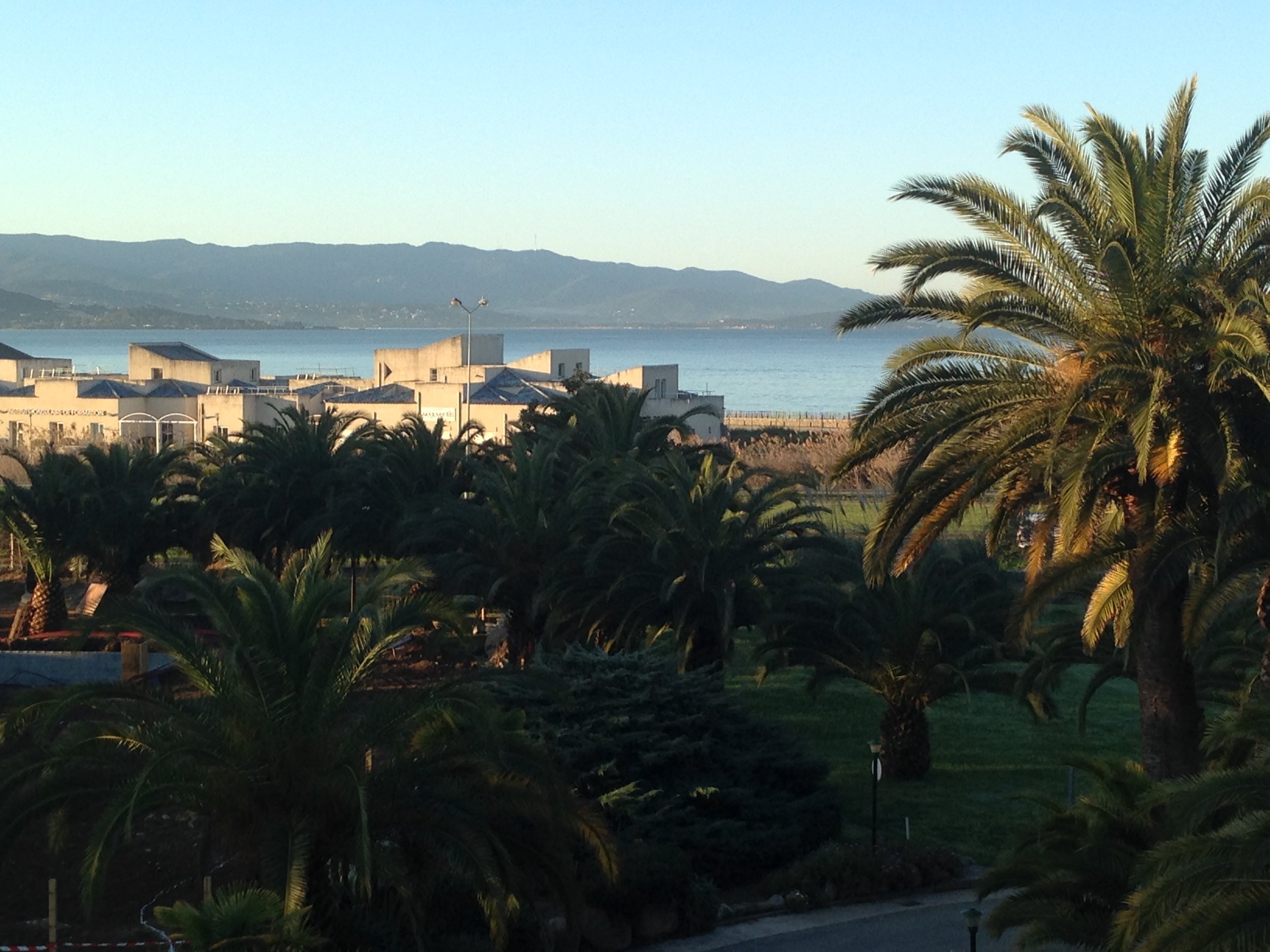Footnotes from Corsica
We shrank into the doorway of a 400-year-old house in the dark as waves of men in brown and black robes paraded past us, intoning Gregorian chants as they dragged heavy crosses on their shoulders.
Following them came a sea of penitents, some carrying torches as they headed for the medieval church in the center of town. We trailed after the last penitents—who bore a huge carving of St. John the Baptist about to have his head lopped off—into the Church of Maria Magiore.
Priests waited in the church to greet each delegation while the choir sang, welcoming Catholics from other parishes and visitors on the highest holy day in Corsica.
Every year on Good Friday in Bonifacio, seven confreries (brotherhoods) from different parishes send delegations to the passion procession and bear heavy reliqueries of patron saints on their shoulders. Like a scene from a Dan Brown novel, members of each confrerie wear colorful robes as they intone chants and psalms.
We happened to arrive in Bonifacio just in time to witness the spectacle, unaware that such processions on Holy Thursday and Good Friday draw spectators from other towns in Italy and France.
Our hotel was completely booked for the weekend, and we were consigned to an annex at the foot of the cliff on which the Hotel Genovese sat. It turned out to be a lucky break for us.
With just three suites in the annex, our room opened onto the boardwalk of a marina with the turquoise waters of the inlet three yards from our windows. From the windows and balcony of our spacious suite, we had stunning views of the bay and of the old town perched above it.
Small But Famous
Corsica, a Mediterranean island off the southeast coast of France, has been settled since the bronze age. Only a half-million inhabitants live in towns sprinkled around the perimeter of the rugged mountainous island.
The Romans conquered it and later the Genoans who ruled for centuries after they colonized it in 1294. The peculiar language they speak is closer to Italian than French, as is the cuisine; yet Corsica is part of France and its most famous native son is Napoleon.
To get to Bonifacio, we had to drive three hours due south after landing in Ajaccio and traverse rugged gorse-covered mountains on precipitous roads. We’d spent a day exploring Ajaccio with its ocher buildings, sidewalk cafes, and daily farmers’ market. The capital of Corsica also has a museum with the largest collection of Renaissance paintings outside of Paris.
But the real gem is Bonifacio, a medieval town perched on a rocky bluff on the southern-most tip of the island. We wandered around the old town with audio guides supplied by the tourist information office, which highlighted a building where the King of Aragon had stayed and—much later—Napoleon.
Crossing the ramparts of the citadel, we ducked into several old churches before ending the tour in the cemetery at the top of the town. It featured sweeping vistas of the Mediterranean and the rocky coast of Sardinia eight miles south of Corsica.
At sunset, after taking a boat tour of the bay and inlets around Bonifacio, we hiked to a lighthouse that marked the southern-most point on the island. On Easter Sunday we did a longer hike along bluffs overlooking the sea which ended at a secluded beach cove that was mostly deserted since it was early spring.
Hiking Corsica
Corsica has dozens of hiking paths along the coast and in the inland mountains. Driving north from Bonifacio, we stopped at several beaches on the east coast and took walks at Santa Giulia and at the Gulf of Pinarellu.
So much sea grass had washed up on the beaches that it looked like a confetti parade had passed there. Under a warm sun that day, the Mediterranean was enticing; yet dipping a toe in the icy sea discouraged me from going in all the way.
We spent a night in Porte-Veccio, which is smaller than Bonifacio and not so interesting as old towns go. Neither was Aleria, a town we passed on route to the former capital in the island's rocky interior.
Precariously perched on the pinnacle of a narrow mountain, Corte is home to the only university in Corsica and has a charming and very steep old town. We toured the town's citadel as well as the museum that had been grafted onto it.
Most of the good hotels in the interior are situated in a narrow gorge carved by the Tavignano River. The Restonica Valley is the jumping off spot for hikes to mountain lakes and to the highest peak on the island.
We stayed in a charming old hotel at the edge of a river gorge and drove up a twisting 10-mile road that led to the top of the valley. Skiers and backpackers on snowshoes played on rugged slopes that were still covered in snow drifts. On a hike lower down, we saw wildflowers and gorse carpeting the hillsides with few other tourists and hikers around.
On our last day in Corsica, we explored some of the beaches around Ajaccio before our flight left in the afternoon. The farther we drove along the coast, the more isolated and beautiful it became.
Stopping in Verghia, we strolled past cows that had come down from the hills to sun themselves by the sea as we were doing; and at a café overlooking the bay of Agosta, we drank in last views of the agate sea surrounding this stunning island.




